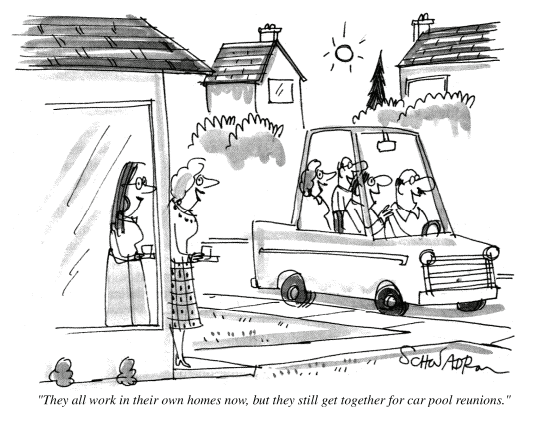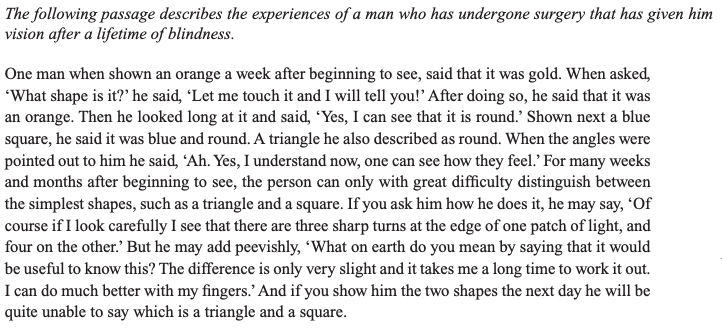FREE MSAP Reasoning in the Humanities and Social Sciences Questions and Answers
Which two of the statements below are most similar to each other in the attitude to equality presented?
(i) Although people possess unequal powers, they nonetheless deserve equal rights.
(ii) People are made by nature unequal. It is vain, therefore, to treat them as if they were equal.
(iii) Kneeling ne’er spoil’d silk stocking; quit thy state;
All equal are within the church’s gate.
(iv) The wealth of a nation consists more than anything else in the number of superior people it harbours.
Explanation:
Both statements (i) and (iii) convey a notion of equality. Statement (i) emphasizes that despite differences in abilities, individuals deserve equal rights. Statement (iii) suggests equality within the context of the church, implying that all are equal once inside. These statements share a common theme of advocating for equality among people, albeit in different contexts.
The cartoon is a comment on:

Explanation:
The cartoon shows the social implications of a decentralised workforce.
The cartoon suggests that current work practices are:

Explanation:
The cartoon suggests that current work practices are unsatisfying.
Which one of the following best describes the tone of the poem?

Explanation:
The tone of the poem is characterized by bitterness, as evidenced by the repetition of "pile them high" and the indifferent portrayal of death. The speaker's derisive attitude toward war and its consequences is evident throughout the poem.
Which literary device is predominantly used in the poem?

Explanation:
In the poem, the grass is used as a symbol to represent nature's indifference to human suffering and mortality. The repeated lines "I am the grass; I cover all" emphasize the universality of death and the natural cycle of life. Thus, the grass symbolizes resilience, continuity, and the inevitability of death.
One week after beginning to see, the man:

Explanation:
The passage describes how the man initially struggled to differentiate shapes visually. He associated shapes with tactile sensations and colors rather than perceiving them directly. This indicates that he formed visual impressions of shapes indirectly, relying on other sensory cues to understand the visual information he was receiving.
The man’s mistake about the square (lines 3 and 4) suggests that:

Explanation:
The man's mistake about the square indicates that he struggled to interpret visual information accurately despite being able to see. This suggests that he could not fully utilize visual clues to understand shapes, which aligns with the challenges he faced in distinguishing shapes visually as described in the passage.
Advertisement
The passage suggests that the man refers to the shapes as ‘one patch of light’ (line 8) because:

Explanation:
The man's reference to the shapes as "one patch of light" suggests that he does not yet fully associate visual images with shapes. This implies that he is still developing his visual perception and struggling to distinguish shapes visually, as described in the passage.
The passage presents shape perception as generally dependent on:

Explanation:
The passage suggests that shape perception, especially for someone newly gaining vision after a lifetime of blindness, is dependent on experience. The man in the passage struggles to distinguish shapes visually, indicating that his ability to perceive shapes is influenced by his limited experience with visual stimuli.
Which two of the following statements express a belief in the inherent value of equality?
(i) "Regardless of our diverse abilities, everyone should have equal access to opportunities."
(ii) "Some individuals are naturally more talented than others, so treating everyone equally is futile."
(iii) "In the eyes of the law, all citizens are considered equal regardless of their social status."
(iv) "A nation's prosperity is directly linked to the quality of its most gifted citizens."
Explanation:
Both statements (i) and (iii) advocate for the importance of equality. Statement (i) emphasizes equal access to opportunities despite individual differences, while statement (iii) highlights the legal principle of equality regardless of social status.
Among the statements below, which pair reflects a similar perspective regarding equality?
(i) "Equality before the law is a fundamental principle that ensures fairness in society."
(ii) "Human nature dictates that not everyone can achieve the same level of success, so treating everyone equally is unrealistic."
(iii) "Social distinctions dissolve within the confines of certain institutions, such as places of worship."
(iv) "The strength of a nation lies in the diversity of talents and abilities among its populace."
Explanation:
Both statements (iii) and (iv) suggest positive aspects of equality. Statement (iii) implies equality within certain institutions, promoting social cohesion, while statement (iv) highlights the benefits of diversity, indirectly endorsing equality of opportunity.